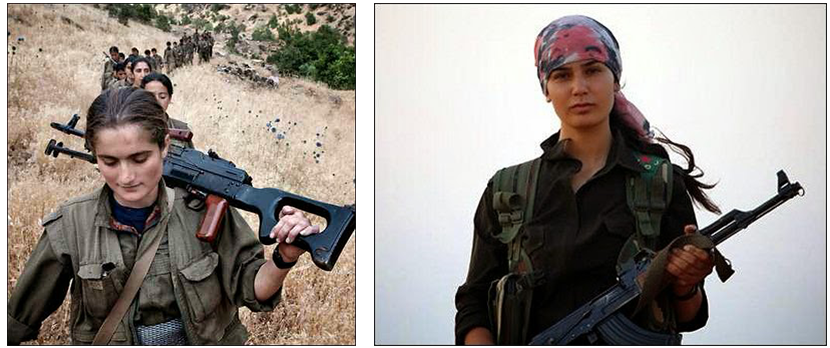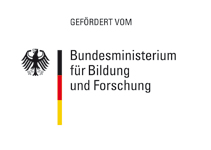A visual essay by Syeda Afsana Tazreen
Introduction

Fig. 1: Instruments of destruction?
The term “terrorism” today has become inseparable from the larger discourse that has emerged since 9/11 turning the words “terrorist” and “jihadist” into casually interchangeable. According to Rustom Bharucha, the discourse has been “primarily authored, produced, and performed” by the United States Security and Defense Departments, justified by “war-mongering think-tanks and advisory committees, information and disinformation services” (Bharucha, 2014: 3).
According to Mia Bloom- a scholar of international studies and women’s studies- it is crucial to demonstrate that terrorism is not a purely Islamic phenomenon (Bloom, 2011: 3). Bharucha also pointed out that suicide-bombing is not a religious act in the slightest hence making any possible relationship between the two, non-existent. Seventy-five suicide bombings were committed by the LTTE in Sri Lanka, a predominantly secular organization, prompting the question whether there is anything specifically ‘Islamic’, or, for that matter, ‘religious’ about suicide-bombing (Bharucha, 2014: 162).
The role of women in jihad is a topic which has been subjected to heated debate among the jihadist community for many years. The Qur’an is not completely clear regarding the female’s role in jihad. However, in spite of the ambiguity, 10-15% of the Westerners who have gone to Syria and Iraq to join Islamic State (IS) are women, according to the International Centre for the Study of Radicalisation, a think-tank in London (Economist, 2015). Now, what it is that draws single young women from the West to join the violent IS and what role do they play? Bloom thinks that the journalistic accounts provided so far are “too simple and uni-dimensional” account of the phenomenon. She insists that there are conditions under which “women are mobilized themselves or mobilize others for terrorism” (Bloom, 2011: 4).
While there is no consensus on the role of women in jihad in the Islamic community, there are two broad categories which can sum up the role of women in jihad: a supporting role versus an active role. This essay will explore women’s role in IS and similar organizations. It also looks into what motivates the women to join this self-destructive path of life.
Joining the terrorist organizations
The word “terrorist” does not conjure up the image of a woman. Women are looked upon as nurturers, and not as instruments of destruction. After all, yielding to violence is a negation of feminine values and the culture of women and the culture of women, which is necessarily the culture of life (Neuberger and Valentini, 1992:2). The truth is that much is said about women but little is known about them. Femininity, like any gender is “not static and universal categories but is a ‘work-in-progress’, socially constructed during the 18th and 19th century (Srivastava, 2012:15). In spite of a culture relegating them to the limbo of a daily routine filled with small things and small deeds, women tragically persist on reappearing on the scene of violence and death (Neuberger and Valentini, 1992:2).
Female terrorists have long been exploiting gender stereotypes to avoid detection. Even today the modern-day female terrorist is not always talked about. They hold negligible attention in today’s media, essentially, because they go against any sense of femininity. The woman who brandishes an automatic weapon incarnates the definitive and irrevocable power of her mysterious myth, of her life and death rites just as Gorgon turns men into stone when she shows her nocturnal face (Neuberger and Valentini, 1992: viii).
Given the terrorist groups gain so much from women’s participation, it is far easier to understand why terrorist groups seek female activists than to explain why women oblige them by heeding call to action. It has been estimated that more than 500 western women have left their families for Syria and Iraq to join the IS. Some travelling today are known to be from North America, Britain, Finland, France, Germany and Sweden. Most are following their men, though many are single (The Economist, 2015).
Internet chat groups with men work as a weapon to attract women. Their communications begin innocently as male-female exchanges, and the men used romantic manipulation to recruit the women to terrorist activities (Berko and Erez: 2008). In a study of female IS recruits, the London-based Institute for Strategic Dialogue quotes Umm Khattab, a woman, believed to be British, who writes on social media from Syria. She describes meeting with the single “sisters”, who are seeking partners among the fighters (Jaffer, 2015).
Nabeelah Jaffer, a journalist of the Economist spent months talking to young British and American women, who traveled to Syria, both before and after. One of them she spoke to was Karen, who confided to Jaffer how she met an IS militant online in 2014 and decided to take a chance on her new identity (Jaffer, 2015). She saw “jihad” as her right as “human beings, not Muslims”. In spite of her hostility towards the west, her western education enabled her to use terms such as “human rights” and “girl power”.
Like Karen, most of these women were conservative Muslims, recent converts or the daughters of Muslims, who took their faith seriously. However, few were willing to scrutinize a variety of Islamic religious texts, traditions and interpretations. Each of these women struggled with ambiguity or disorder – in theology, in identity and in life. Each was convinced that there could be only one valid interpretation of Islam and of Sharia law, and that it lay in whatever appeared to be as “anti-western” as possible. To find it, they had to erase their western identities. Joining IS offered them an opportunity to do so.
Another teenager, Umm Kulthum presented democracy as the binary opposite of a utopian caliphate. “The law of Allāh should not be voted over,” she said, quoting Anwar al-Awlaki, the jihadist propagandist who was killed in 2011 (Jaffer, 2015).
However, the IS is not the only one to draw women by flocks. The PKK, the Kurdish nationalist group, which is listed as a terrorist organization by the US and the EU, but is also at the forefront of the fight against IS on the ground, has all-female combat units (Jaffer, 2015). Thousands of women as fighters, is an unusual phenomenon in the Muslim world in which warfare is often associated with manhood.

Fig. 2 & 3: PKK vs. IS: Kurdish women in the front lines in Syrian Kurdistan.
These women find themselves battling militants preaching an extreme form of Islam. Young teachers, such as Afshin Kobani joined the front lines after she lost many friends and family members to IS. For Kobani, there is nothing new about Kurdish women fighters. They have fought alongside men for years in a guerrilla war against Turkey, seeking an independent Kurdistan which would encompass parts of Turkey, Syria, Iraq and Iran. She says how suicide bombings have long been “part of the Kurdish women fighters’ battleground repertory” (Becatoros, Elena and Bassem Mroue. 2014). Holding the position of a commander of a mixed-gender unit, Kobani says “We are just the same as men; there’s no difference,” she said. “We can do any type of job, including armed mobilization.” “This is our land – our own – and if we don’t do it, who else will?”
The Motivation
While the male martyrs gain adoration and fame in their own circle and are believed to be rewarded in heaven with 72 virgins, the motivations of women tend to be more “intricate and multilayered” (Bloom, 2011). The motives for women to turn to terrorism are divided between the desire to avenge the death of a friend or family member with religion, culture, society and national issue, as the background (Berko and Erez: 2008).
The “hint of danger” also makes it “glamorous”, for younger and more impressionable girls who experience “big adrenaline rush” (Jaffer, 2015). The “caliphate utopian ideal” is one of the common yet major pull factors that draw women over. According to Melanie Smith of the Institute for Strategic Dialogue, the young women imagine a world without poverty, inequality, governed with “perfect fairness under clear-cut, divine laws that work to the advantage of all” (Jaffer, 2015). One of the teenagers Jaffer interviewed believed it to be “sinful” for Muslims to be staying in UK whilst there is a khilāfah (a caliphate) (Jaffer, 2015).
Apparently, militant men are also used to entice young women with their “masculinity”. Katherine Brown of the University of Birmingham, said how there is a term circulating: “jihotties”, which refer to men who are displaying their “masculinity and heroism”. In an interview, Prof Mia Bloom, author of “Dying to Kill”, says how it’s about “romance, the perfect life and about making everything bad in their past go away” (CNN, 2016). Other pull factors include: promises of free housing, healthcare, cars and of course, the “honour” of being a martyr’s widow (CNN, 2016).

Fig. 4: Hayat Boumeddienne and her fugitive companion Amedy Coulibaly.
But there are also “push factors” existing simultaneously that cause women to dive headlong into danger. According to Smith, it is often loneliness and alienation (Jaffer, 2015). Let us consider the case of Hayat Boumeddienne, a 26-year-old woman who died from asphyxiation after an explosion caused by a suicide vest in the Paris attack in 2015. One of the seven children born to Algerian parents in Paris, she was placed in foster care at the age of twelve after her mother died and her father remarried. She was expelled from foster homes for assaulting social workers and failed to finish high school. A childhood friend described her as “impulsive,” emotionally fragile and constantly vented about her growing sense of alienation as a Muslim (Henessy-Fiske, Molly. 2015).
IS propaganda is designed to appeal to people who feel like outsiders in their own homes, which is why it appeals to mostly second generation migrants. “Islam began as something strange and it will revert to being strange,” reads a hadith [teaching] that is popular among IS supporters online, “so give glad tidings to the strangers” (Jaffer, 2015).
Despite promises of free housing and healthcare, reality does not add up, as housing, water and electricity are scarce (CNN, 2016). Women often cannot choose their husbands. After the women arrive, they are placed in female dorms for indoctrination. After getting married they have a hard time adjusting to the position of constant subordination and subjugation (Jaffer, 2015).Even the few happy ones do not last long. IS uses its men as pawns which means that many of these marriages will be short lived. It is a badge of honor for a woman to be widowed but then the women are “recycled” or simply made “sex slaves” (CNN, 2016).

Fig. 5: Austrian teens Samra Kesinovic and Sabina Selimovic. Samra was beaten to death while Sabina is missing.
Escaping the fate proves to be nearly impossible. For instance, 17-year-old Austrian Samra Kesinovic, who left home in April 2014 was killed after she was caught trying to escape Syria. Her friend 15-year-old Sabina Selimovic, who ran away with her, is also believed to have died in the Syria, though her body was not found (Webb, 2015).
The Tools of Recruitment
The social media works as the major tool of recruitment. According to Lorenzo Vidhino of George Washington University’s Program on Extremism, part of what entices them is the glossy presentation online. It also appeals to the demographics. Vidhino says, “The aim is to catch the young and impressionable ones, who comprise of people in their teens, early twenties, which is why the online presentation contains a lot of pictures but not a lot of words” (CNN, 2016).
Using women also demonstrates the depth and importance of the conflict, and the strength of the terrorist organizations (Berko and Erez: 2008). Women who have already made the journey use such media to groom or motivate those considering it. Since accounts can be suspended, they encourage hopefuls to contact them through Kik, an instant-messaging app, or websites such as ask.fm. These propagandists for jihad describe life under IS and wartime domesticity (Economist, 2015).
Shamima Begum, a 15-year-old Londoner, travelled to Syria to join the IS in 2013 with her two friends, both her age. Before leaving Britain, Shamima Begum followed 74 Twitter related to Islam, some way or the other. Besides quoting the Quran or re-tweeting stories of alleged atrocities by Western troops in the Middle East, they spread gory photos of dead Islamic State fighters, or sites that respond to fans’ requests, such as “Describe your ideal wife” (Economist, 2015).
Gendered Roles

Fig. 6: Chechen ‘Black Widows’ also known as Shahidka in Russia, which means a female martyr.
Like elsewhere, masculinity assumes the superior position while femininity takes the backseat. The actual planner and string-puller is usually a man who sometimes finds a “subcontractor to enlist, recruit and support an attack when women are involved in its operational aspects” (Berko and Erez: 2008).
Unlike certain terrorist organizations, such as Chechnya’s Black Widows, where women are highly trained explosive experts, who have been involved in over fifteen terrorist attacks in under fourteen years, including the attack on the Moscow Theatre in 2002, killing 129 people, fighting is off-limits for women in IS (Williams, 2014).
A video emerged on social media last year, showing IS female militia firing machine guns in Syria. With the Church of St Simeon in the background, the women were seen shakily firing a few rounds. The women, all fully veiled, were shouting jihad slogans while attempting to use their AK 47 rifles (Wyke, 2015).

Fig. 7: The radical group of women shouting out their devotion to Jihad.
However, a document published last year by an all-female unit of IS known as the al-Khansaa Brigade[1] explains that women should be mothers and homemakers, while men should be fighters as they are by nature restless. According to it, “If the roles are mixed then, the basis of humanity is thrown into a state of flux and instability”[2] (Jaffer, 2015).
Conclusion
Terrorism can be best understood as a violent communication strategy: the nature of the terrorist act, its atrocity, its location, and the identity of its victim all serve to amplify the power of the message (Neuberger and Valentini, 1992: 63). According to Bharucha, the relationship between “terror and the sacred” demands a different conceptual and discursive framework and terrorist global agencies like Al-Qaeda may invoke the language of Holy War, but this is less about the sacred, or even religion, than it is about a particularly “perverted form of megalomaniacal violence and anti-Western hatred” (Bharucha, 2014: 14).
In spite of random videos and stories of women in niqabs (veils) with weapons, charging into battle, it is well documented that the IS doctrine places women at a significantly lower echelon than men. Although, fighting is off-limits, the attempt to build a state has opened up roles for women. Even in terrorist organizations, women are expected to adhere to their role of taking care of the private sphere for her man to participate in the public sphere” (Srivastava, 2012: 22).
For the women joining IS and similar organizations, there is no room for an ambiguous multicultural identity. They believe in the brand of Islam which is defined more by opposition to today’s western world than by anything else. To all these women, IS is simply “the State” and the world outside IS is nonexistent.
Notes:
[1] The Al-Khansaa Brigade is led by Sally Jones, a British woman who once expressed her desire to behead Christians with a “blunt knife”. She is a mother-of-two and joined the terror group with her husband and children in 2013. Her husband helps runs the ISIS recruitment arm in Raqqa.
[2] The document titled, “Women in the Islamic State” was translated into English by the Quilliam Foundation, a counter-extremism think-tank in London.”
References:
Image Sources:



